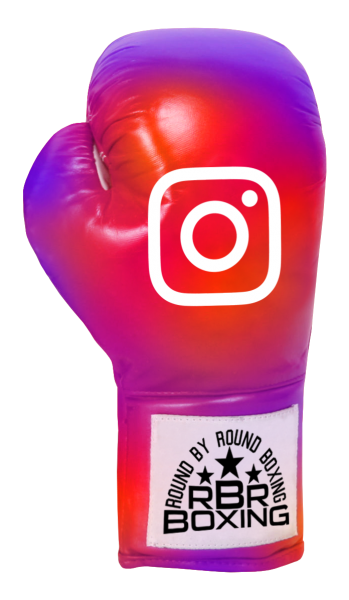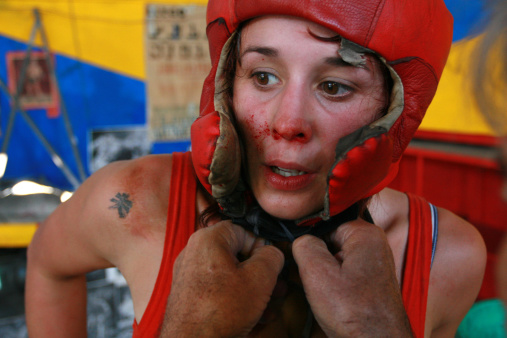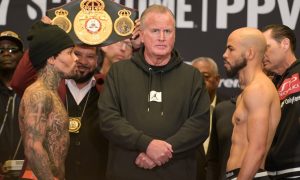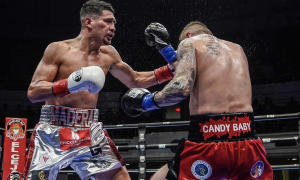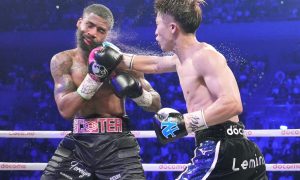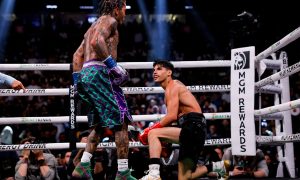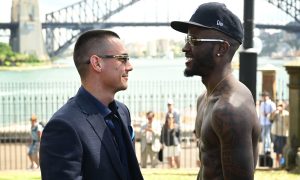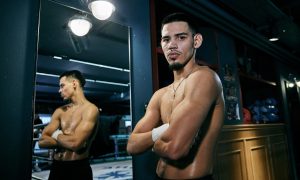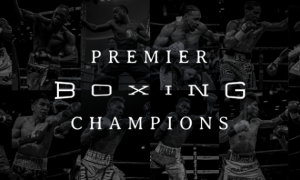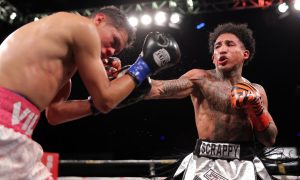About a week ago a friend-of-a-friend, knowing my passion for boxing, asked if I knew of female boxer Kaliesha West.
“Who?” I thought.
I honestly had not heard of her, but I instantly felt embarrassed. Not because I didn’t know West specifically—I’m still familiarizing myself with fighters in the game—but because I can only name a few female fighters off the top of my head.
The first fight I remember watching was Floyd Mayweather vs. Zab Judah in 2006.
About three years later I started going to a boxing gym regularly. In addition to sparring, my trainer recommended that I watch boxing to study the sport.
As a new student of boxing, I had no idea where to begin or who to watch, but I would learn about upcoming fights by word of mouth in the gym or from major networks like Showtime and HBO.
From that point on, my boxing dossier accumulated big names and notes on fighters like Mayweather, Andre Ward and Manny Pacquiao–none of whom are female boxers.
It’s not that I was opposed to watching women’s boxing, it just seemed that men’s boxing was a lot easier to come by.
Yet, I have to accept at least some responsibility for my unfamiliarity with female fighters. With the internet it’s not impossible to find videos of their fights on YouTube and boxing sites.
Still, there is a disparity between the visibility of female and male fighters in boxing. There are many ways to unpack this issue, but I believe at its core are society’s fundamental beliefs about women in general, particularly when it comes to them developing and executing their physical strength.
When “women of boxing” first comes to mind, the more appealing and accepted image is that of the ring girl. She is thought of as sexy, beautiful and desirable. Her easiness on the eyes, much thanks to toned legs and cleavage, contrasts but balances the gore and grotesqueness of the rigorous work men do in the ring.
It’s also a comfortable image.
 Photo by Chris Farina/Top Rank
Photo by Chris Farina/Top Rank
We tend to look at the way people carry themselves—how they speak, dress, behave—and based on that data ascribe to them a certain gender. We then use spectrum’s of femininity and masculinity to determine how “womanly” or “manly” an individual is.
In this sense, gender is not a fixed concept, but a presentation of ourselves we practice on a daily basis. Therefore, the snubbing of women’s boxing can be attributed to the underlying belief that women who box aren’t performing their gender correctly.
Most do not consider it feminine or womanly to be strong, muscular and participate in a sport like boxing that tests physical and mental strength—but why not?
I find that the most unfortunate and limiting aspect of femininity, especially when we talk about athleticism, is that it is rarely allowed to stand on its own. What is considered feminine is always the opposite or inferior of what is masculine.
So the logic goes like this: If masculinity is being strong and muscular, then femininity should mean being weak and puny. If male athletes embody their manliness with aggression and strength, then female athletes should embody their womanliness by being mild-mannered and dainty.
Perhaps this is why back in 2011, the International Boxing Association (AIBA) thought it was sensible to present female boxers with skirts for competition in the 2012 Olympics.
Roughly a year prior to this decision, AIBA President Ching-Kuo Wu made the following statement:
I have heard many times people say, ‘We can’t tell the difference between the men and the women,’ especially on TV, since they’re in the same uniforms and are wearing headgear.
But does this matter? I don’t know about you, but good boxing is good boxing, no matter if women or men are in the ring.
To ease the backlash, the AIBA insisted that the skirts were optional though they weren’t introduced as a means of improving women’s functionality in the ring. It was clear that the skirts served an aesthetic purpose.
With this said, I must ask—why do we insist that women boxers be visually appealing in order to appreciate their athletic abilities?
I think the issue of aesthetics, or how women appear visually, is tied to how they are frequently reduced to objects.
The female boxer undermines this status because her realized physical and intellectual strengths resist objectification.
Jean Kilbourne once said, “Turning a human being into a thing is almost always the first step in justifying violence against that person.”
I believe that absurdly, some find women’s bodily strength threatening, even beastly, because their physical prowess is a confident expression of ownership over their own bodies.
Women having strength comparable to men also opens up the possibility of them not being as susceptible to acts of violence and abuse that so many women have endured.
From the first day I stepped into Donte’s Boxing Gym, a place not too far from where I live, I was never discouraged from improving my strength, testing my limits, and getting into the ring with men and women.
In fact, I remember the first time my trainer placed me in the ring with a guy that was at least 250 pounds. Initially I was nervous, but I effectively out-boxed him and he was stunned by how much power I had.
I recognize, however, that my experience is an exception to the rule. Even Marlen Esparza’s trainer, Rudy Silva, initially told a young Esparza that he didn’t train females. He eventually did train her, and she went on to become an Olympic medalist.
As women, we are typically denied the space to develop and practice our physical strength, especially in male-dominated spaces like the weight room and of course, the boxing gym.
We are also denied the privilege of being complex individuals. When I see members outside the gym, they are frequently surprised to see that I enjoy dressing up, having my nails done, wearing makeup, the works. When I tell people I meet that I teach and spar at a boxing gym, they are surprised that someone so “feminine” can box.
Instead of accepting that a female athlete can be multifaceted and interesting, there is an urge to size up her appearance, sexuality and capacity to perform her gender, which ultimately distracts from her talent.
A female fighter is more than the box people seek to put her in. Female boxers are a positive force in the sport and for women in general because they represent the endless possibilities of physical and mental power women can achieve if we would stop trying to restrict them.
Of course there are some structural issues facing female boxers, as boxing already has its own set of organizational issues that all fighters try to navigate.
Nevertheless, moves can be made to increase women’s visibility in boxing. Why not feature them on cards with well-known names and on major networks, even if it means being featured along with male fighters?
 Photo courtesy of 112575 Media Inc
Photo courtesy of 112575 Media Inc
I can say that I now know something about Kaliesha West. She is a former three-time WBO bantamweight and current IFBA Super Bantamweight world champion. I also took time to learn about some of the other pound-for-pound ranked women of boxing.
Undefeated champion Cecilia Brækhus (25-0, 7 KOs) could make history when she faces Ivana Habazin on September 13 by becoming the first female boxer in any weight category to unify a division by holding all four major titles.
On the pound-for-pound list there’s also Marcela Eliana Acuna, Anne Sophie Mathi, and Yesica Yoland Bopp, just to name a few.
I look forward to learning more about the talented ladies of the sport because my passion for boxing can’t be real if it’s exclusionary.
I’m currently taking any recommendations on women to add to my boxing dossier.
Header photo by Hans Neleman – Getty Images




